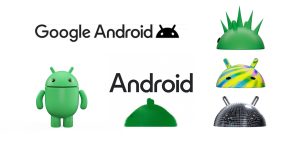
Aislelabs, a Toronto-based company offering in-store analytics and solutions for building mobile shopping experiences, today released a report examining how Apple’s Bluetooth iBeacon technology impacts battery life on iOS devices vs Android. The study found that Apple’s iBeacon framework, first introduced with iOS 7 to let iOS developers take advantage of Bluetooth beacons for sending location-aware notifications, actually performs better with Android, at least when it comes to battery life:
From the table it is evident that Moto G depicts the best battery behavior. Comparing Nexus 5 and iPhone 5 family (roughly having the same generation of BLE chipsets) at low number of beacons, we observe that Nexus 5 depicts better (lower) battery consumption. As the number of beacons increases, the battery consumption becomes similar… Moto G, and newer Android phones are extremely power efficient when using iBeacons. We believe this comes from beacon sampling on BLE chipsets used by these phones.
The report also shows that the newer iPhones perform much better than previous generations likely due to a more efficient Bluetooth chip in newer models that has been optimized for the technology:
Table 1 shows that iPhone 4S consumes the most amount of battery and iPhone 5S is the most optimized (newer phones have more optimized chipset). As the number of beacons increases, the phone uses more battery. With a single beacon, and continuous scan, 4S uses 5.75% more battery whereas 5S uses 4.25% extra battery compared to the baseline. As the number of beacons increase to 10, the additional battery drain for 4S and 5S becomes 11% and 4.75%. It is evident that the newer iPhone 5S consumes only half the battery compared to the 4S model when there are a 10 beacons nearby.

While Android devices seem to win out when it comes to battery life in most scenarios in the experiment, the report notes that Apple takes a slightly different approach with the way it allows iOS to scan for beacons compared to Android. “Android allows for scanning all beacon signals in the background, but iOS restricts background search to a pre-specified set of iBeacon identifiers (UUIDs).” That approach does provide modest battery life savings compared to Android’s method in some cases, but the report says newer Android devices implementing automatic sampling of beacons are overall more efficient:
Moto G, and newer Android phones are extremely power efficient when using iBeacons. We believe this comes from beacon sampling on BLE chipsets used by these phones… Apple lets the developer manually specify a list of beacons to scan for as an attempt to save battery. Moto G on the other hand does automatic sampling without imposing a burden to the app developer.
The report clarifies that the experiment used continuous scans every second, but real-life results fall somewhere under 1% for all devices with average daily usage. “Note, while the battery drain for iPhone 5S may seem very high in our experiments, this is not the case in real-life. In our experiments, we are doing continuous scan every second for an hour, a sensible app in real-life in the background scans are a lot less frequent. Daily consumption with iBeacon applications should be no more than 1% over a 12 hour period in real-life situations.”
The full report is available from Aislelabs here.
FTC: We use income earning auto affiliate links. More.




Comments